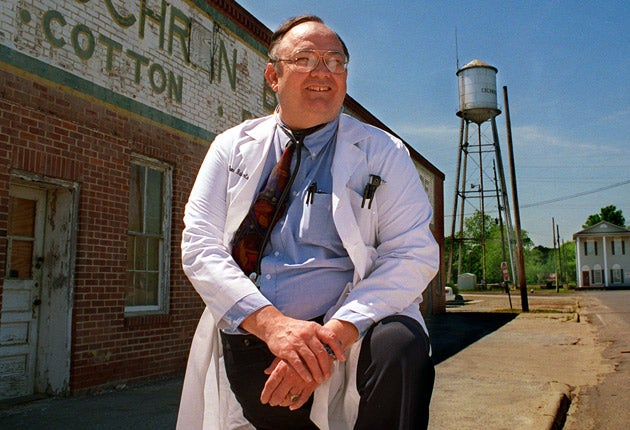Ed Roberts: Pioneering electronics engineer who built the first widely available home computer

Your support helps us to tell the story
From reproductive rights to climate change to Big Tech, The Independent is on the ground when the story is developing. Whether it's investigating the financials of Elon Musk's pro-Trump PAC or producing our latest documentary, 'The A Word', which shines a light on the American women fighting for reproductive rights, we know how important it is to parse out the facts from the messaging.
At such a critical moment in US history, we need reporters on the ground. Your donation allows us to keep sending journalists to speak to both sides of the story.
The Independent is trusted by Americans across the entire political spectrum. And unlike many other quality news outlets, we choose not to lock Americans out of our reporting and analysis with paywalls. We believe quality journalism should be available to everyone, paid for by those who can afford it.
Your support makes all the difference.Ed Roberts was one of the early pioneers in the world of personal computing, an electronics engineer who designed and created the first widely available home microcomputer in 1974. With no keyboard, no screen and only a set of switches to programme it, this was a different beast to today's laptop and desktop PCs. However, it is thanks to Roberts and his colleagues that computers emerged out of the worlds of academia, the military and commerce to make their way into our homes.
It was the cover of the January 1975 issue of Popular Electronics magazine that heralded this revolution. The editors had heard of a project by Roberts' company, MITS, to create a kit computer for home use. Although the Altair 8800 machine they illustrated was just a prototype when the magazine was published, the resulting publicity brought thousands of orders and bolstered the previously loss-making company.
The Altair announcement also brought the attention of the young Bill Gates and Paul Allen, who offered to develop software for the new machine in a computer language known as BASIC. Their success with this early microcomputer inspired them to found Microsoft (then called Micro-Soft). Roberts later recalled Gates being "a very bright kid, but he was a constant headache at MITS. You couldn't reason with him. He did things his way or not at all."
Roberts spoke of what he perceived as the slow adoption of this new technology: "It took the industry a long time to realise that microprocessors and microcomputers were also very useful. People went through this thing where there were 'supercomputers', there were 'computers', there were 'minicomputers' and then there were 'microcomputers'. Everyone assumed that when you said 'microcomputer' you were talking about a performance thing. A microcomputer was really a technology and that was one of the arguments – the term 'microcomputer' didn't say a thing about its performance, they were missing the whole point."
Roberts was born in Florida in 1941 and spent his early years there and in Georgia. He became interested in electronics through his father, a home appliance repair engineer. After joining the US Air Force in 1962 he taught at the Cryptographic Equipment Maintenance School in San Antonio and worked at a USAF Weapons Laboratory in Albuquerque. It was here that he met Forrest Mims, with whom he founded MITS in 1969. The pair worked initially from Roberts' garage and were able to the run company full-time three years later, when Roberts left the Air Force. Their first products were model rocket kits, radio transmitters and calculators.
Thanks to the Altair microcomputer, by 1977 MITS was turning over more than $13 million a year and was sold to Pertec Computer Corporation for $6 million. Roberts bought a farm, went off to medical school in 1982 and, started his practice as a family doctor in Cochran, Georgia, fulfilling a lifelong ambition.
On hearing that Roberts was ill with pneumonia in recent weeks, Bill Gates visited him in hospital. Paying tribute to his mentor, he and Paul Allen remembered Roberts as the man who "was willing to take a chance on us ... and we have always been grateful to him."
Marcus Williamson
Henry Edward Roberts, electronics engineer, farmer and physician: born Miami 13 September 1941; married 1962 Joan Clark (divorced 1988; five sons, one daughter), 1991 Donna Mauldin (marriage dissolved), 2000 Rosa Cooper; died Macon, Georgia 1 April 2010.
Join our commenting forum
Join thought-provoking conversations, follow other Independent readers and see their replies
Comments